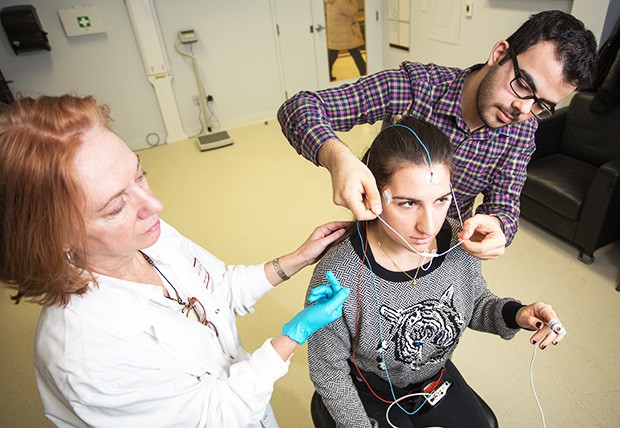The brain — specifically the parts of the brain called the thalamus and cortex — produces electrical activities during sleep. On the monitors of measurement equipment, one of these activities appears as patterns of squiggly lines that scientists refer to as spindles.
In a previous experiment, Dang-Vu and his colleagues discovered that greater spindle activity helps sleepers resist waking, despite noise. The new study aimed to test whether there would be a similar relationship between spindles and stress.
The hypothesis proved true. “We found that those who had the lowest spindle activity at the beginning of the semester tended to develop more sleep disturbances at the end of the school semester coinciding with the period of preparations for final examinations,” Dang-Vu says.


 A recent Concordia study examined the sleep quality of 12 Concordia students as they went through the nerve-racking experience of finals. | Photos by Concordia University
A recent Concordia study examined the sleep quality of 12 Concordia students as they went through the nerve-racking experience of finals. | Photos by Concordia University
 Assistant professor Thien Thanh Dang-Vu
Assistant professor Thien Thanh Dang-Vu
 High spindle activity
High spindle activity
 Low spindle activity
Low spindle activity